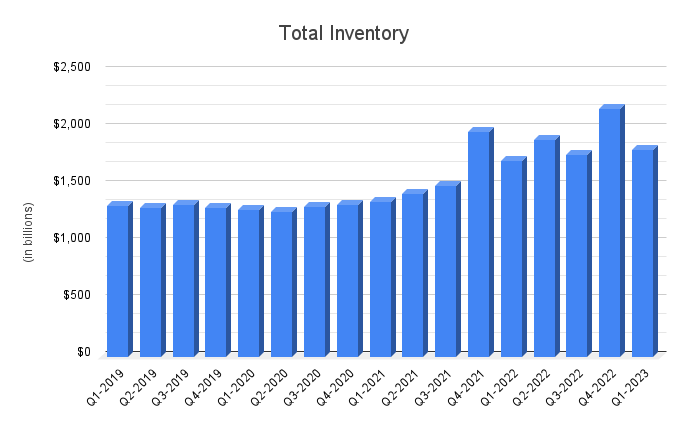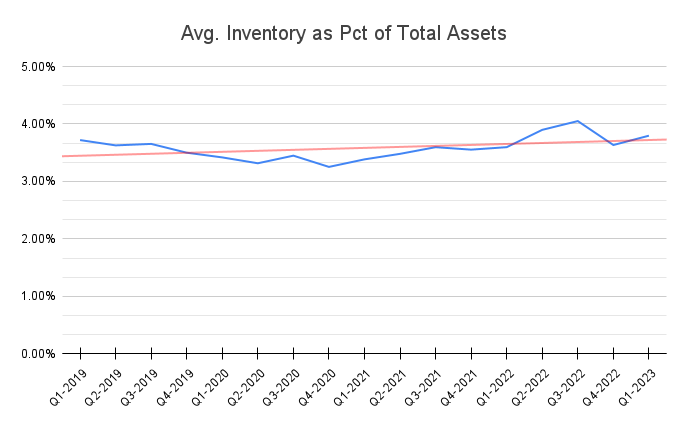The U.S. economy has long been rumored to be at the brink of recession — except that it hasn’t actually entered recession yet, and nobody knows whether it will, so everyone is turning over every piece of data they can find to dig up one more morsel of insight about what might happen next.
To that end, we submit a quick analysis of inventory values.
After all, if consumers aren’t buying anything— or if they’re spending more money to buy the same amount of goods, thanks to inflation — then inventory should start to pile up on the balance sheet, right? Or maybe it’s the other way around: if consumer sentiment is strong, then businesses stock up on inventory to meet heightened demand rather than get caught flat-footed. That is precisely what happened to lots of retailers in 2021, when consumers showed up with cash in hand and retailers hadn’t obtained enough inventory during 2020.
We offer two charts to shed light on the situation.
Figure 1, below, shows total quarterly inventory values for all firms with $250 million or more in annual revenue since the start of 2019.

Notice how total inventory values trended down in early 2020 as the pandemic struck, and then edged upward only slightly through most of 2021. That’s when many companies realized they should have ordered more goods several quarters ago, and when supply chains finally started unknotting — so inventory levels rose from Q4 2021 through 2022. Even Q1 2023 is appreciably higher than most quarters that don’t have a “4” in them, which coincides with the holiday season.
Except, inventory alone doesn’t convey too much information. So Figure 2 shows the average inventory as a percentage of average sales of that same 2019-2023 time period. Actual numbers are the jagged blue line; the overall trend is the red line.

Our thinking is that if inventory suddenly started piling up on the balance sheet, it would become a larger percentage of all assets. The red trend line shows that inventory as a percentage of total assets is rising, but “suddenly” doesn’t seem like an appropriate adverb to describe things. That upward slope is so gentle we had to squint to see it.
Also notable: the only sudden jump in this ratio happened in Q3 2022. That was when inflation was raging away at nearly 10 percent. The Federal Reserve hasn’t tamed inflation yet, but the latest numbers now suggest annual inflation is closer to 4 percent than 8 or 10 percent. So perhaps that spike in Q3 2022 was a collective pause by consumers as inflation squeezed them.
Will matters ease now? Financial analysts should know more soon, as Q2 2023 financial results start arriving — the first this week, and many more by the end of August, including large retailers who report on a July 31 quarter end. Stay tuned.